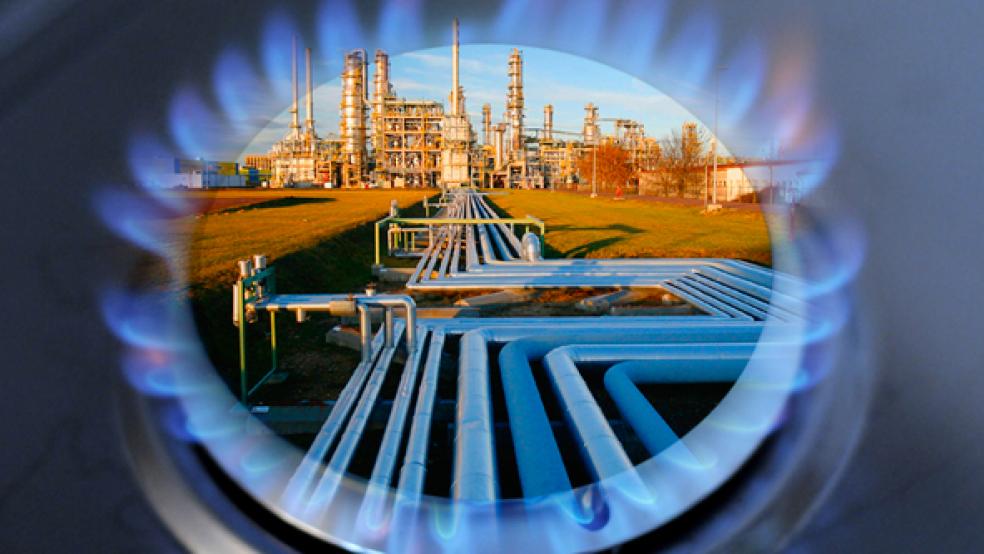U.S. oil drillers have been hollowed out from what has been described as a price war waged by OPEC. But a separate price war might soon descend upon the U.S. natural gas industry, which is already reeling from a downturn in prices.
The market for natural gas is not a global one in the same way that it is for crude oil. So while supply and demand fluctuations will reverberate around the world, the full effects of sudden shifts in fundamentals are usually confined to regional markets.
Related: 5 Conspiracy Theories About the Oil Crash, from Ludicrous to Logical
A global surge in natural gas export capacity is making the gas trade a lot more competitive. That is especially true in Europe, where U.S. LNG threatens to challenge Russia’s long-held customer base. Cheniere Energy is putting the finishing touches on its Sabine Pass LNG export facility in the Gulf of Mexico, and several more export terminals are under construction and will come online in the years ahead. These terminals are seeking to export LNG to Asia, as well as to customers in Europe.
Russia has traditionally had a captive market in Europe, but with American LNG coming on the market, state-owned gas giant Gazprom is reportedly weighing an aggressive response. According to a new report from the Oxford Institute for Energy Studies (OIES), Gazprom might consider a strategy to flood Europe with cheap gas in 2016 to kill off U.S. LNG.
Such a scenario would be possible because Gazprom has 100 billion cubic meters of annual gas production capacity sitting on the sidelines in West Siberia, which can effectively be used as spare capacity, not unlike the way Saudi Arabia can ramp up and down oil production to affect prices. Gazprom’s latent capacity is equivalent to 3 percent of global production. This large volume of capacity is the result of investments that were made in a major project on the Yamal Peninsula back when gas markets looked much more bullish.
The approach would mirror Saudi Arabia’s strategy of keeping oil production elevated in order to protect market share, forcing the painful supply-side adjustment onto higher-cost producers. Crucially, Gazprom can produce and export gas to Europe at a much lower cost than LNG from across the Atlantic.
Related: Why US Companies Are Left Out as Iran Gets Back to Business
Gazprom’s cost to export gas to Europe stands at $3.50 per million Btu (MMBtu), according to figures from OIES. That easily undercuts the cost of landing LNG in Europe from the U.S., which OIES says costs American exporters $4.30/MMBtu. Even that is probably generous – other estimates peg U.S. LNG export costs to Europe at somewhere around $5/MMBtu for liquefaction and transportation, plus the cost of procuring the gas from U.S. gasfields, which today runs a little bit above $2/MMBtu.
The OIES report studies several scenarios facing Gazprom and finds that flooding the market with gas, while depressing prices, will result in more revenues for the gas giant over the next several years. By pushing prices down below the short run marginal cost of production for U.S. LNG, Russia could protect its customer base and make up for lost revenues by holding onto market share. Sitting back and not waging a price war, on the other hand, would result in $25 to $40 billion less in revenues over the next five years for Gazprom as imported LNG makes inroads in Europe.
But the calculus is a bit more complicated than that. Gazprom has traditionally sold gas at higher-priced long-term contracts. The company could try to enforce those prices instead of flooding the market, in an effort to take in higher revenues. But the EU is also pursuing an antitrust campaign against Gazprom for manipulating prices. With that in mind, Gazprom’s best choice might be to pursue the market share strategy.
There would also be a political benefit for Russia to depress prices. For years Russia has tried to diversify away from Russian gas, largely due to concerns over security of supply, but also because Russia had been able to command higher prices through strict contracts. The crisis in Ukraine accelerated the effort in EU capitals to find alternative sources of supply because of perceived hostility in Moscow. But if Gazprom intentionally depressed prices, it could undermine the EU’s effort at diversification, since cheap gas would be hard to pass up.
If Gazprom and Russia do indeed decide that their best bet is to flood Europe with gas, push down prices, and box out its competition, that is bad news for LNG exporters around the world, including in the U.S. LNG export terminals from the U.S. that have not yet received final investment decisions are already out of the money. But Gazprom could decide to force out shipments on a marginal cost basis. It is not clear that Gazprom has made such a decision, but there is a degree of logic to it given the rising competition in Gazprom’s backyard.
“Why would you concede market share to a higher cost producer?” James Henderson, author of the OIES report, told the FT. “If I was an investor in U.S. LNG I would be worried.”
This article originally appeared on OilPrice. Read more from OilPrice.com:
Iran Looking To Ramp Up More Than Just Oil Production




